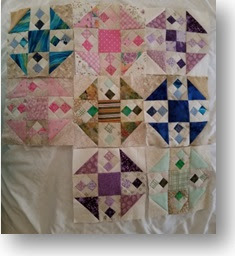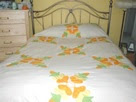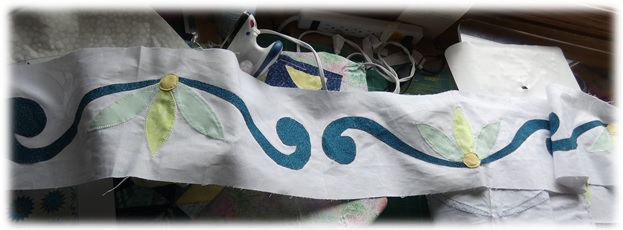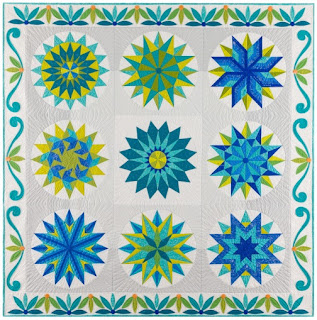I was once terrified of needle-turn applique. So, when I glimpsed this year's Block of the Month project from The Quilt Show, one of my favorite on-line quilt experiences, I wasn't so sure I could handle this quilt, called "Garden Party Down Under."
I had done some hand-applique, but I knew I wasn't very good at it.
My quilting journey is and has been since my first quilt about 25 years ago, all about challenging myself. So, I decided to give it a try. Even if my skills are less than stellar, I knew this quilt would turn out to be beautiful.
I am so glad I decided to give this a try.
Despite my late start, beginning the January block about five months into this year, I am well on my way to getting caught up. I have been working feverishly, but not because I'm behind, but because I LOVE hand applique and this quilt contains a ton of it. I am now working on Month 8 (August) and am loving every minute of it.
The more I do it, the more comfortable it is to sit in a favorite chair as I listen to music, an on-line book, or the television, as I stitch.
As the care-giver for my husband who suffered a stroke seven years ago, I don't really have much 'spare time.' I have no problem working on a quilt project while the laundry piles up or dishes fill the sink. Those mundane chores will just sit there until I decide to take them on. I refuse to be a slave to such things. I decided long ago that my freedom to do as I please will always take precedence over a perfectly clean house, perfectly manicured garden or having all my chores completed.
Quilting is not just a hobby for me. It is my therapy. It is my inspiration, stimulating my desire to be better at something that matters to me. I enjoy the creative process, making something beautiful, and learning new things.
I remember when I first started quilting many years ago. I knew instinctively that I would always be a quilter. I soon realized that there would be no end to learning techniques, patterns, fabrics. I had no way to know that quilting would be my salvation, a lifeline to stave off depression or to renew hopes and dreams during the difficult times of extreme stress.
Quilting is not just busy work for me. I continue to learn new things. I have spent countless hours studying the work of others and adapting techniques that suit my abilities.
At left is an example of the first two months of work, the center medallion of this quilt designed by Australian artist Irene Blanck. There will be more photos to come.
This project was sold as a kit, but I always like to use the stash of fabrics I've collected. While this isn't considered a "scrappy" quilt, I am using my favorite colors and fabrics, many of which are scraps from other quilts I've made.
I really can't wait to see how this turns out and even better; I can't wait to hand-quilt it.
I've decided that although I love my sewing machine, I really love hand work. I plan to sew by hand just as long as my eyes and hands cooperate. So far, so good.













